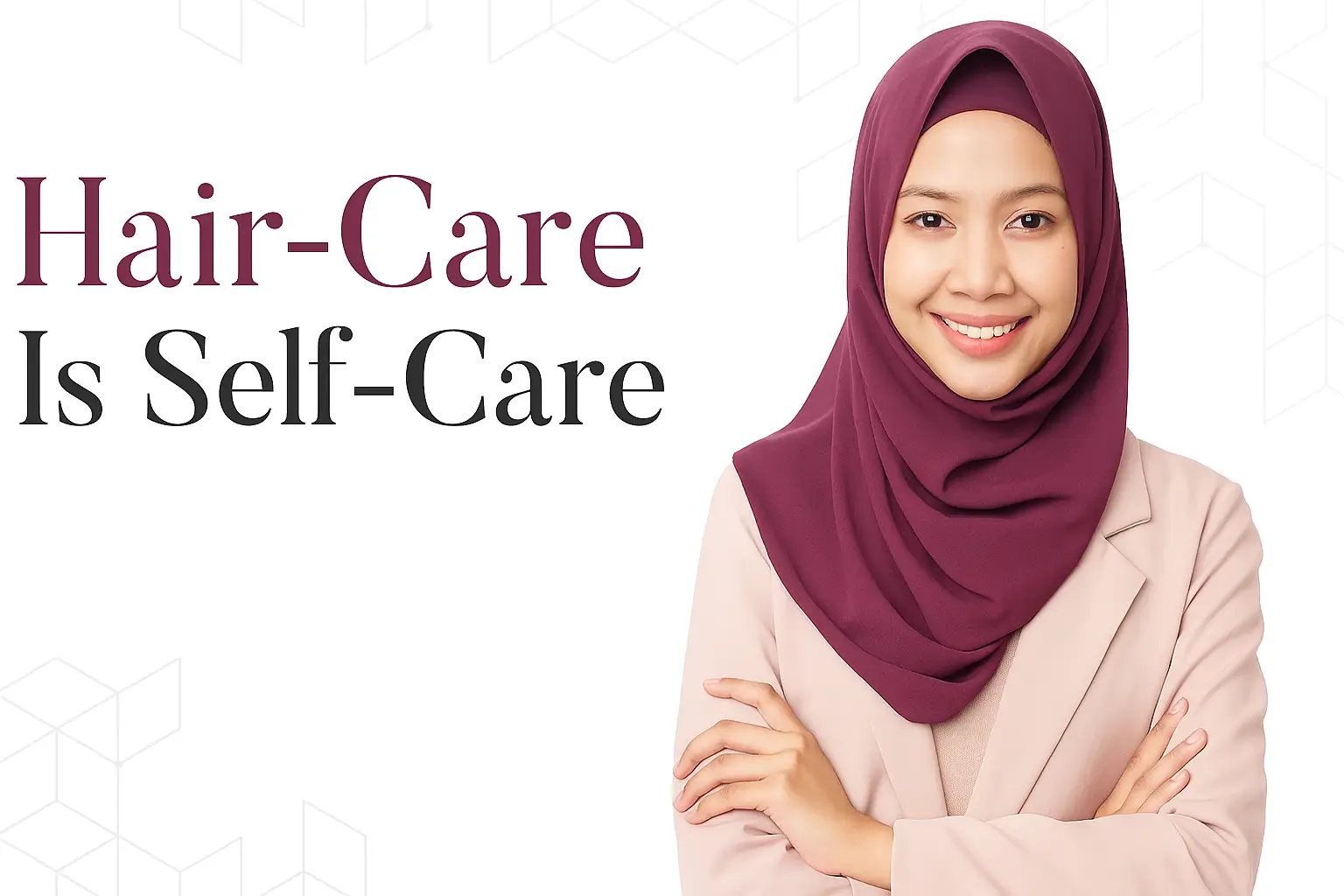air-Care Is Self-Care: Tips for All Hijabi Sisters
One of the most overlooked yet essential aspects of a hijabi’s lifestyle is hair care. Many of us tend to neglect it until we start noticing hair loss, thinning strands, or scalp problems. Just like everyone else, hijabis spend time outdoors, where pollution, dust, sweat, and heat get trapped under our hijabs. Over time, this can lead to issues like dandruff, dryness, split ends, itchy scalp, and hair fall.
It’s important to remember: a hijab, even when it fully covers your head, does not automatically protect your hair from all these factors. Your hair still needs to be nourished and cared for like any other part of your body.
Here are some practical steps you can add to your daily or weekly routine to revive, protect, and pamper your hair:
Step 1: Understand Your Hair
Before beginning any hair care routine, get to know your hair type. Is it straight, wavy, curly, or coily? Do you struggle more with dryness or oiliness? Different hair textures and concerns require different products.
Also, be mindful of the tension you put on your scalp. Tying your hair too tightly under your hijab can cause headaches and even lead to a receding hairline. Switch up your parting every now and then, use hair-friendly clips instead of tight elastics, and when you’re at home, keep your hair loose or tied in a relaxed style to relieve the pressure.
Step 2: Baby Hair & Hijab Caps
A common challenge for hijabis is managing baby hairs that slip out from under the scarf. While a hijab cap seems like the perfect fix, the fabric you choose makes all the difference.
Some undercaps absorb too much moisture, leaving your hair dry and frizzy. Instead, opt for soft materials like velvet or satin, which help maintain moisture balance and keep your scalp cooler. You can also pull your ears out of the cap if your scarf fabric is opaque.
Alternatively, try a velvet wig grip band instead of a traditional cap. It keeps your hijab in place without drying your hair. If baby hairs are still a struggle, a light hair spray along your hairline can help tame them.
Step 3: Washing & Hair Care Products
When it comes to hair wash, the key is balance. The frequency of shampooing depends on your hair type. What matters most is the kind of shampoo you use.
- If you have dry or frizzy hair, avoid shampoos loaded with sulfates and silicones, as they strip away natural oils. Instead, go for sulfate-free formulas.
- Don’t skip oil massages—they improve blood circulation and restore shine. For dry hair, oiling twice a week followed by a deep-conditioning treatment or hair mask once a week can do wonders.
Step 4: Don’t Forget the Small Habits
Some simple but often overlooked habits can greatly improve your hair health:
- Let your hair breathe: At home, loosen your bun, gently massage your scalp, or simply run your fingers through your hair to relieve stress at the roots.
- Switch to silk or satin pillowcases: These reduce friction, helping prevent frizz and breakage while keeping your hair smoother overnight.
- Check your water quality: Hard water strips moisture and leads to scalp irritation and dandruff. Washing your hair with soft or filtered water can make a big difference.
- Be mindful of sun exposure: A little sunlight provides Vitamin D, which strengthens follicles and supports growth. But avoid prolonged exposure to prevent UV damage—moderation is key.
- Never tie wet hair: Wrapping or tying wet hair under a hijab can cause fungal infections, scalp irritation, and breakage. Always let it air-dry first.
Final Note
Your hair is a blessing and part of your overall health. Just because it’s covered most of the day doesn’t mean it should be neglected. With a little effort, care, and the right habits, you can maintain strong, healthy, and beautiful hair under your hijab.

